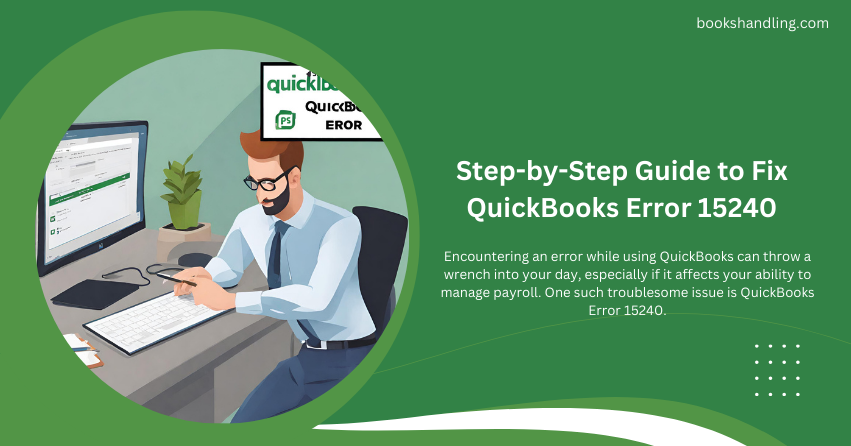
What is QuickBooks Error 15240?
QuickBooks Error 15240 is a common hiccup users might face while updating QuickBooks or downloading a payroll update. This error generally manifests with a message such as “Error 15240: HRESULT XXXXX The Payroll Update Did Not Complete Successfully.” The failure of this update can be particularly frustrating as it halts the processing of crucial financial data.
Symptoms of Error 15240
- Failure in update completion: The most direct impact of QuickBooks Error 15240 is the interruption of the update process, either for QuickBooks itself or its payroll functions.
- Error messages: Users are typically alerted to the issue through error messages explicitly mentioning Error 15240.
- File permission issues: Difficulty accessing or modifying files could also be symptomatic of this problem.
Causes of QuickBooks Error 15240
- Incorrect installation: An incomplete or improper QuickBooks installation can lead to numerous issues, including Error 15240.
- Outdated software version: Running an outdated version of QuickBooks can prevent the software from functioning correctly.
- Internet connection issues: A weak or unstable internet connection can disrupt QuickBooks’ ability to download updates.
- Windows registry errors: A corrupt Windows registry caused by a recent QuickBooks-related software change (install or uninstall) can provoke this error.
- User permission restrictions: Lack of proper user permissions for the QuickBooks installation folder can prevent updates from being applied.
- Firewall or security settings: Overly stringent firewall or security settings might block QuickBooks’ access to essential network resources.
Step-by-Step Guide to Fix QuickBooks Error 15240
Step 1: Verify Use as Administrator
- Right-click on the QuickBooks icon on your desktop.
- Select ‘Run as Administrator’.
- If prompted, confirm that you want to allow QuickBooks to make changes to your device.
Step 2: Check the System Date and Time Settings
- Right-click on the time display on the taskbar and select ‘Adjust date/time’.
- Ensure the date and time are correct. If not, update them and restart your computer.
Step 3: Update QuickBooks to the Latest Release
- Open QuickBooks.
- Go to Help > Update QuickBooks Desktop.
- Click on the ‘Update Now’ tab.
- Check the ‘Reset Update’ box to clear all previous update downloads.
- Click ‘Get Updates’ to download the latest updates.
- Once the download completes, restart QuickBooks.
Step 4: Verify Internet Explorer Settings
- Open Internet Explorer.
- Go to Tools > Internet Options.
- Click on the Advanced tab.
- Scroll down to Security and check the boxes for ‘Use SSL 2.0’ and ‘Use SSL 3.0’.
- Apply the changes and restart your computer.
Step 5: Clean and Install QuickBooks in Selective Startup
- Back up your QuickBooks data.
- Start your PC in Selective Startup mode.
- Uninstall QuickBooks via Control Panel > Programs and Features.
- Reinstall QuickBooks while still in Selective Startup mode.
- Switch back to the normal startup mode after installation.
Step 6: Use QuickBooks Install Diagnostic Tool
- Download and install the QuickBooks Tool Hub.
- Run the QuickBooks Install Diagnostic Tool.
- The tool will automatically find and fix issues with Microsoft components QuickBooks uses.
Step 7: Configure Windows Firewall and Antivirus
- Configure your firewall settings to ensure QuickBooks has internet access.
- Temporarily turn off your antivirus software and attempt the update again. Re-enable it afterwards.
By following these detailed steps, you should be able to resolve QuickBooks Error 15240 and return to managing your business finances effectively. Regular maintenance, including software updates and timely backups, can help prevent future occurrences of such errors.
